Greetings from Read Max HQ! Today’s email is written by a guest author, Read Max Gadget Correspondent (Acting) Dan Nosowitz.
What do we want out of our smartphones? I’ve noticed a recent nostalgic fondness for the strange, malformed, often baffling phone design of the turn of the millennium, as in the Twitter thread below:

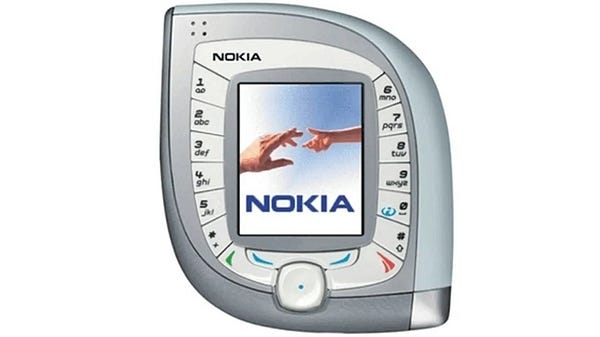
While I, too, feel this nostalgic tug, we shouldn’t fall prey to the idea that, silly phones are no longer being made. All around the globe, regular people are using extremely funny/stupid phones, and perhaps you would like to buy one for yourself or for a loved one this holiday season.
Dan, a longtime member of the Read Max Extended Universe (which is what I call my friends), has written eloquently in the past about his compulsion to purchase badly made, strangely designed, possibly quite dangerous gadgets from companies you’ve never heard of on websites that probably shouldn’t exist.
For the holiday season, in his capacity as newly appointed Acting Gadget Correspondent, Dan has agreed to weigh in on the Unihertz Jelly 2, a small smartphone that recently became the talk of Los Angeles when Dan took it out at a party and everyone made fun of him. You can read more of Dan’s writing at http://dannosowitz.com.
Holiday Gift Guide: Buy This Incredibly Stupid Small Phone, Or Honestly Maybe Don’t
A review of the Unihertz Jelly 2
By Dan Nosowitz
Where has the human-sized smartphone gone? Even normal sized phones are too big now, let alone the specifically large ones. Hands, meanwhile, have remained the same size, at least to the best of my knowledge. A mystique holds around “small” smartphones among sophisticated, stubborn, obsessive consumers. There are enough internet searches for "small phone" to generate reams of mangled, SEO-optimized blog posts; tech blogs repeatedly cheer on the iPhone Mini even though it is so unpopular that Apple won’t even make it anymore. But this cadre of devoted small-phone fans are still not numerous enough to convince Apple or Samsung to make a phone to their specifications.
My advice to these people -- to anyone looking for a small phone -- is to turn away from your conglomerates and your chaebols, and shun the iPhone and the Galaxy. Turn instead to this: The Unihertz Jelly 2.
Why you shouldn't trust me
I need to be clear, up front here, that this is not a traditionally "good" phone, in the sense of "it works consistently to the quality you have come to expect from flagship Samsung and Apple products," and I am absolutely not a reliable narrator or guide. There is something wrong with my brain which causes me to dislike and distrust competently made and assembled electronics. I see the fact that the iPhone works consistently as a gigantic red flag. There are, in fact, many phones that work well. Too many. “Working well” is boring.
I prefer things that are almost, but not actually, good. To some extent this is about frugality: This item is 80 percent as good as the popular one, but costs 60 percent as much,1 which math-wise puts me firmly in the black. But If I'm being honest, it’s that 20 percent that's broken, not the 80 percent that works, that’s the most tempting thing. Sure, my Onyx “BOOX” is only 80 percent as good as the Kindle. But which 80 percent? What is going to break, and how? What can I learn about the gadget -- and myself -- when it breaks? Even better, what if I could mess around with it, add some aftermarket pieces, spend hours on YouTube and forums, understand the occult nature of the gadget? What if I could make it 85 percent as good?
It takes work to find the gems, but they’re there. Whatever is wrong with my brain causes it to flood my lobes with serotonin when I finally land on a $25 pair of something called the TENNMAK PRO earbuds which sound honestly incredible.
On the other hand, sometimes I buy an aftermarket car stereo on Alibaba and then my car stops turning on.
The Unihertz Jelly 2
Despite my love of garbage tech, my last several smartphones have been extremely boring and competent. For a long time I had a Google Pixel, which works 95 percent as well as an iPhone – a threshold much too high – so I made it both more broken and more capable by running a hacked version of iMessage on it. But I bought a new cellphone recently, called the Unihertz Jelly 2, which I love, because the 20 percent that is broken is amazing.
The Jelly 2 is, as far as I can tell, the smallest fully-functional modern smartphone on the market today. The iPhone 14 has a 6.1-inch screen; the iPhone 14 Pro has a 6.7-inch screen; the flagship normal phones from Samsung and Google are both around this size. The Unihertz Jelly 2 has a three-inch screen.
Mere measurements do not really do justice to the size of this phone. It is only about an inch bigger, in terms of screen size, than the (admittedly very large) Apple Watch Ultra. It is barely larger than the big shiny watch that guy from high school who got a business degree wears. It is roughly the size of a pill canister. It is small enough that your hands don’t quite know how to hold it; you can grip it in many different ways.
My last phone, which was a Google Pixel 6, made me feel either frustrated (when something didn’t work right) or absolutely nothing (when it worked right). The Jelly 2 makes me feel delighted when something works right, because it’s so improbable that a phone which has given itself such a ludicrous handicap works right. When it doesn’t work right I forgive it, due to the biological phenomenon of neoteny. It’s clearly trying its best.
Unihertz, which makes the Jelly, is an interesting company. It doesn’t really offer "normal" phones – say, smartphones within a particular size range and with the kind of functionality an average consumer might expect. Instead they offer what I would describe as "fucked-up" phones, which come in a variety of eldritch sizes and form factors, and provide unusual functionality. It sometimes feels like Unihertz designers have given themselves extreme and usually unnecessary restrictions and then see if they can make a good phone despite those restrictions, as though they were contestants on a smartphone-manufacturing reality competition show with weekly challenges.
This is a big phone with a hardware keyboard, like a Blackberry.
This is a phone with another screen on the back.
This is a rugged phone that you can run over with a Fiat 500.
This is the Jelly 2, which is, as we’ve established, very small.
Unihertz's tagline is “Unique Smartphones for the Minorities,” which is really close to being a good tagline. Just needs some editing.
The thing about the Unihertz Jelly 2 is that it doesn’t appear on the lists of the dozens of posts called “The 10 Best Small Phones” on websites named “TechAdvisor” or “PhoneArena” or whatever. Those websites make what I think is a basic mistake, which is that they try to find the best small phones. Like – OK, man. That's just a good phone, but smaller. “Small phones” from huge companies like Samsung or Asus are for amateurs. The geniuses at PhoneArena may enjoy it, but I want the hard stuff. The Unihertz Jelly 2 is the hard stuff.
My experience with the Unihertz Jelly 2
I had known about the Unihertz Jelly 2 for at least a year before buying it. Every once in a while, I’d watch a YouTube video about it, think about buying one, and then back away. But eventually the glass cracked on the camera for my Pixel, and I had no choice:2 I bought the $200 smallphone. Here is my experience.
This phone overachieves in every conceivable way and in several ways that were not thought to be conceivable at all. Without going too deep into the specs, because that’s boring, I will note that it is about as powerful as a 2014 MacBook Air, and that Android, which it runs, is much less demanding than Mac OS, which the 2014 MacBook Air runs. It is roughly as powerful as a top-of-the-line phone from two or three years ago.
The screen, while tiny, is sharp and bright. The speakers, while tiny, are loud and adequately clear. The battery lasts all day, mostly. The on-screen keyboard looks laughable, but they’ve done something with predictive typing that means that you actually do, somehow, hit the letter you’re trying to hit most of the time, and typing is not much slower or less accurate than on a normal phone. And it is very powerful, which means it doesn’t stutter or struggle with multiple apps and that everything moves very fast. It costs $200, an absurdly low price, and comes with a case.
It also has all of these goofy extras. It has two SIM-card slots, one of which can instead host a microSD card for extra storage (which it doesn’t need; it comes with 128GB). It has 6GB of RAM, which is a lot. It has a headphone jack, which I very much missed on my previous phone. It has an FM tuner (?) and an IR blaster (??) that can turn on TVs for some reason (???). It has a little notification LED that blinks green if you have a new text or email, so you don’t have to turn on the screen to check. It has a fingerprint reader and face unlock and a programmable hotkey and NFC (for wireless payments) and a transcription app and customizable equalizer. It has a very lightly altered version of Android, just tweaked a little to make it easier to use at this screen size but not enough to be ugly, annoying, or confusing.
When you use this phone in public, people will want to talk to you about it. The most common question is “what is that” or “is that, like, a real phone” or, in the case of my immediate friends and family, “Dan … why.” But I’ve handed the Jelly 2 to people and after they mess with it a little, they’re also taken in by how charming and teensy it is. They’re sometimes impressed with it, too, though I don’t get the sense that very many would consider actually buying one.
This phone is shockingly non-shitty. It is clear when using this phone that Unihertz is a very, very powerful company, filled with engineers with powerful brains; I don’t know if Apple or Samsung or Google could have made this thing. What it also means is that Unihertz is absolutely capable of making an extremely good normal phone, and that they have chosen instead to make Stupid Phone. I admire this.
The Best Phone for Nobody
Other reviews of the Jelly 2 have attempted to, in the ways of tech reviewers, find the perfect audience for this phone. Maybe it’s ideal as a second phone that you can bring on trips, or to try to lessen your screen time, or as a workout device. No. It’s ideal for nothing and nobody. That’s not the point.
Unihertz didn’t decide to make the best small phone they could make; they decided to make the smallest phone they could make, and then make that the best that it could be. I don’t actually think that there are any advantages to this particular size. In fact, I think if it was just slightly bigger, say four or 4.5 inches, Unihertz would be able to fix the issues it has (a larger battery, easier to type on, better camera, maybe a little thinner).
It would be a better phone at that size, but it would lose all its charm. Part of the charm was figuring out how to make this phone, which is wildly impractical, actually work as the single most important piece of technology I own. Through forums and videos and careful studying of all of the settings, I was able to get it to run my hacked iMessage (the issue was with some deeply buried battery-saving features), to work on Verizon (the phone wants to; Verizon doesn’t), and to do everything a normal phone would do. It’s a little worse at most of those things, but my brain compensates for that with the joy I get from using it.
When I do the New York Times crossword on this phone, or chat with friends, or watch YouTube videos, what I think is “Aahahaha I can’t believe this phone can do that! And it’s actually pretty good at it!” If it was a bit larger, I would think nothing. At most, I would think about how the camera basically stinks, or how it doesn’t offer USB-C fast charging, or about what’s for dinner.
I kind of doubt that I’ll use this phone for very long as my main phone. It is very stupid. But there’s something honorable about doing a stupid thing really well. It’s a formula that has served the boys of Jackass for 75 years. And there’s no higher praise I can give than to compare something to Jackass.
Dan Nosowitz is a writer and editor based in Los Angeles.
More often it's 60 percent as good for 40 percent of the cost.
I had a choice



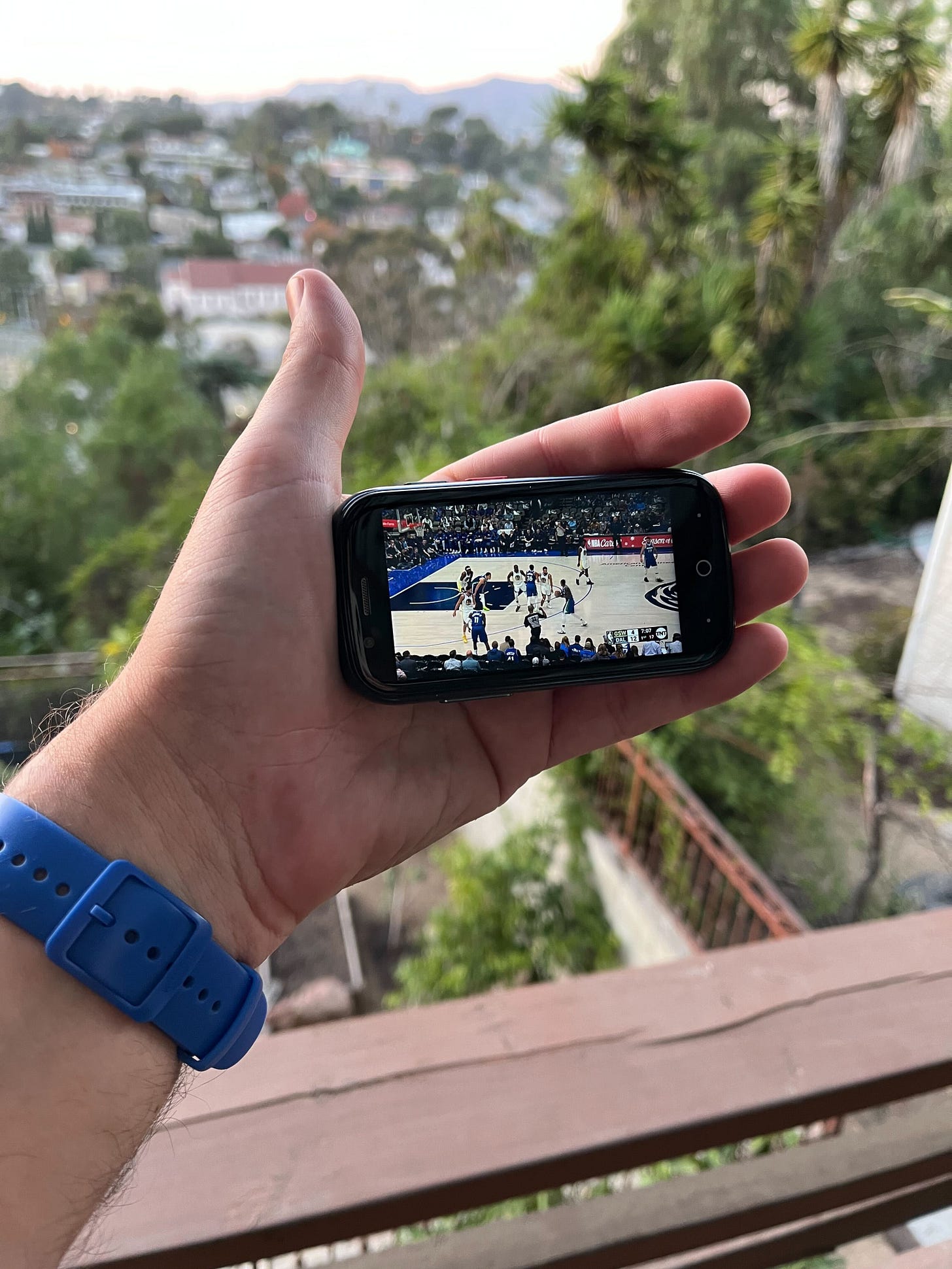

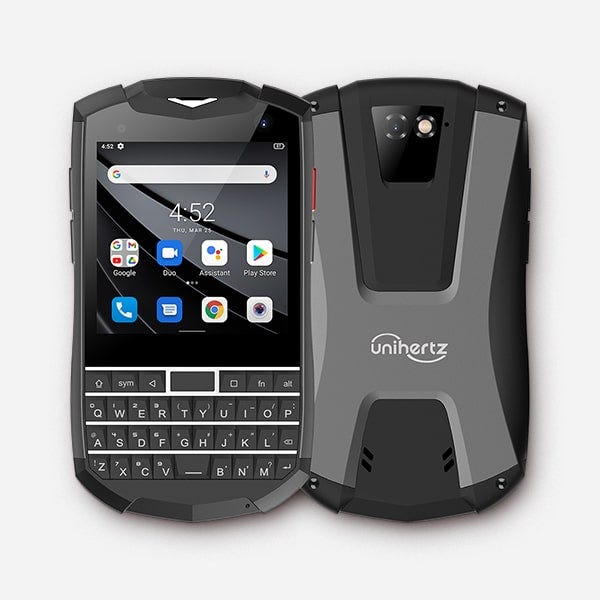
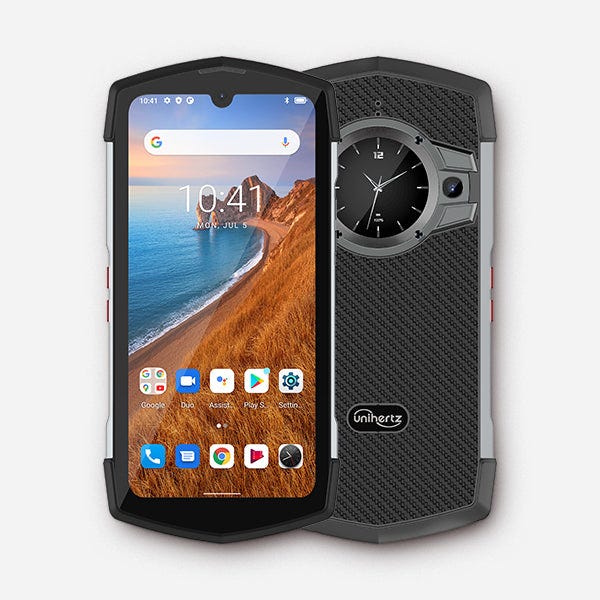

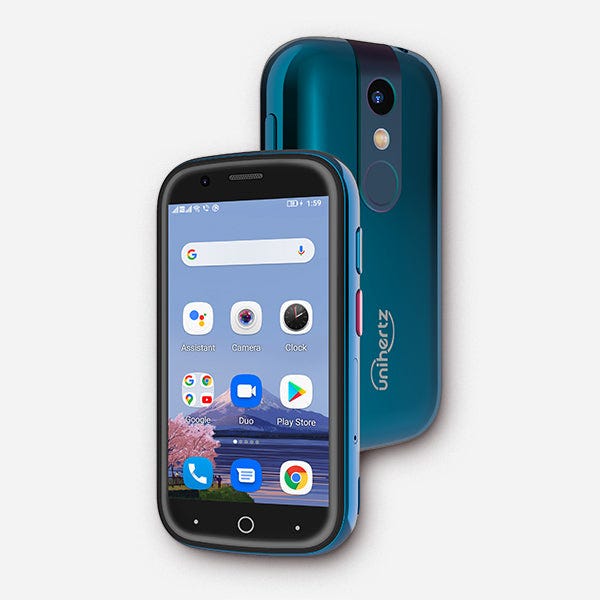
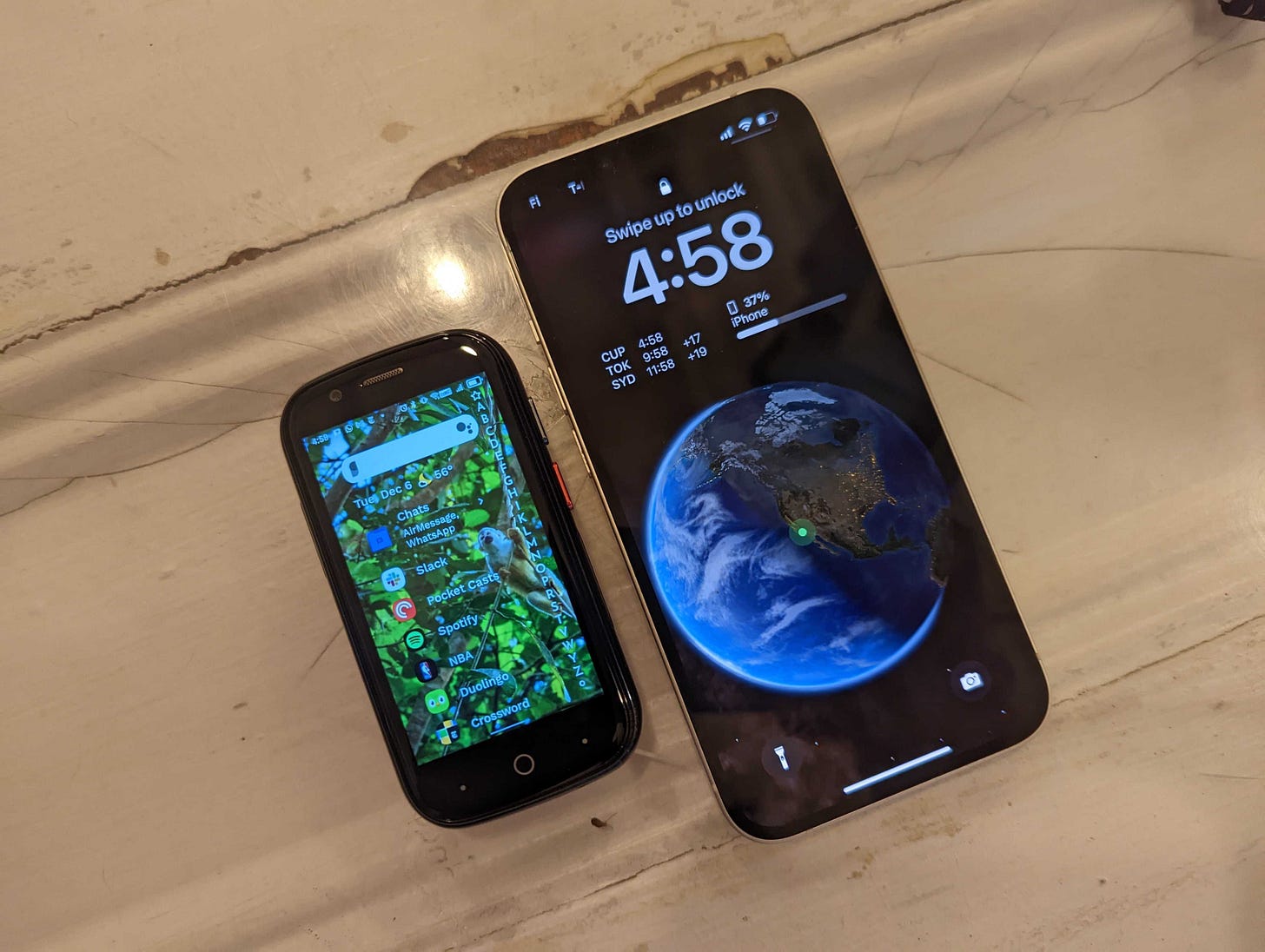
Please buy and write more articles about fucked-up garbage technology
I have this. I also have an 8bitdo Zero controller and a 3D printed case that puts the two together as an incredibly tiny handheld console that could play PS2 and Wii games. I have it in my bag because it takes up close to zero space, and I actually used it for a month as my primary phone when my main phone was broken and in warranty repairs. For fun and giggles I installed Android Desktop mods on it and used it as a desktop too, so I can say I have the worlds smallest desktop PC: https://i.imgur.com/3yvTW8i.jpeg